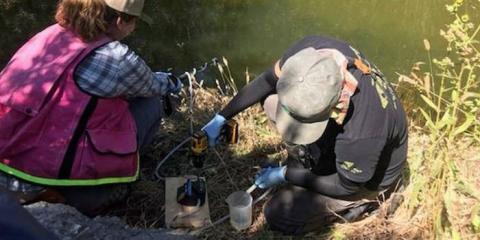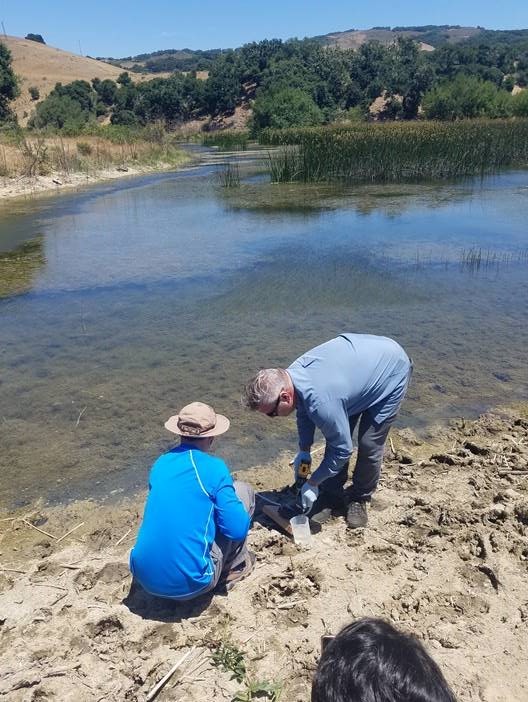Water, wildlife and eDNA
September 19, 2019
When The Wildlife Society advertised a workshop in Southern California to learn more about eDNA, I didn’t immediately jump at the chance. I’m a wildlife biologist native to Oregon, and I didn’t think traveling to SoCal in late July sounded like a very good idea. But I clicked on the link anyway. I’m so glad I did!
eDNA (environmental DNA) is a relatively new technique scientists are using to look for wildlife in ecosystems where they’re hard to locate. eDNA comes from biological material that species have shed. You can use scat to learn about an individual species, or shed material to learn which species are using a habitat. I’ve been conducting surveys for many species of wildlife, using a variety of protocols, for more than 20 years, but I’ve never used eDNA to do it. I learned that eDNA is best used when there isn’t any other way to find the species. For example, there might be such low numbers in an area that traditional surveys wouldn’t detect the species – but by looking for evidence of their DNA, you can find them.

To learn how to collect eDNA, we had the amazing opportunity to head out to The Nature Conservancy’s Jack and Laura Dangermond Preserve. It’s a place dedicated to preservation, located adjacent to Vandenberg Air Force Base outside Lompoc, Calif. (Yeah, I had to look it up!)
It seems pretty simple to collect eDNA; you use a mix of hoses, filters, pumps and poles – it didn’t look a lot different from my backpacking water filter. However, you must be super-careful not to contaminate the sample. When I tried it, I felt like I needed at least seven hands to do everything right. But it got easier. And when you’re done, you’re left with a tiny test-tube-looking filter that you keep on ice and send to the lab. They “run it” and tell you if evidence of the species you’re looking for was found in the sample. Easy.
But I’m a practical person, and I work with foresters and land managers. Is this useful for us? Do we want to wait for samples to be run through the lab? And what about “false positives”? In regard to the latter, I learned that there really aren’t false positives, and it’s so incredibly unlikely that something or someone is going to “dump” eDNA into your research area that no one worries about that. OK, whew! So how can I use it?
One immediately useful way eDNA is and can be used is to determine the upper extent of fish use in forest streams. This seems like a very good idea to me, as we’re still lugging in backpack-style fish “shockers” and literally shocking the fish to see if they’re present. It’s an accepted method and doesn’t hurt the fish. But with new technology, we may have other methods to learn if fish are using the stream, with less impact on them.
More research is needed to determine the efficacy of eDNA, and we need to work with regulators so everyone is comfortable with the data. But as new technology becomes available, this may be another accepted method to learn about the species we manage. If you want to learn more about wildlife species in Oregon, check out the Wildlife in Managed Forest publication series. (https://www.oregonforests.org/publications)
Fran Cafferata Coe
Cafferata Consulting
